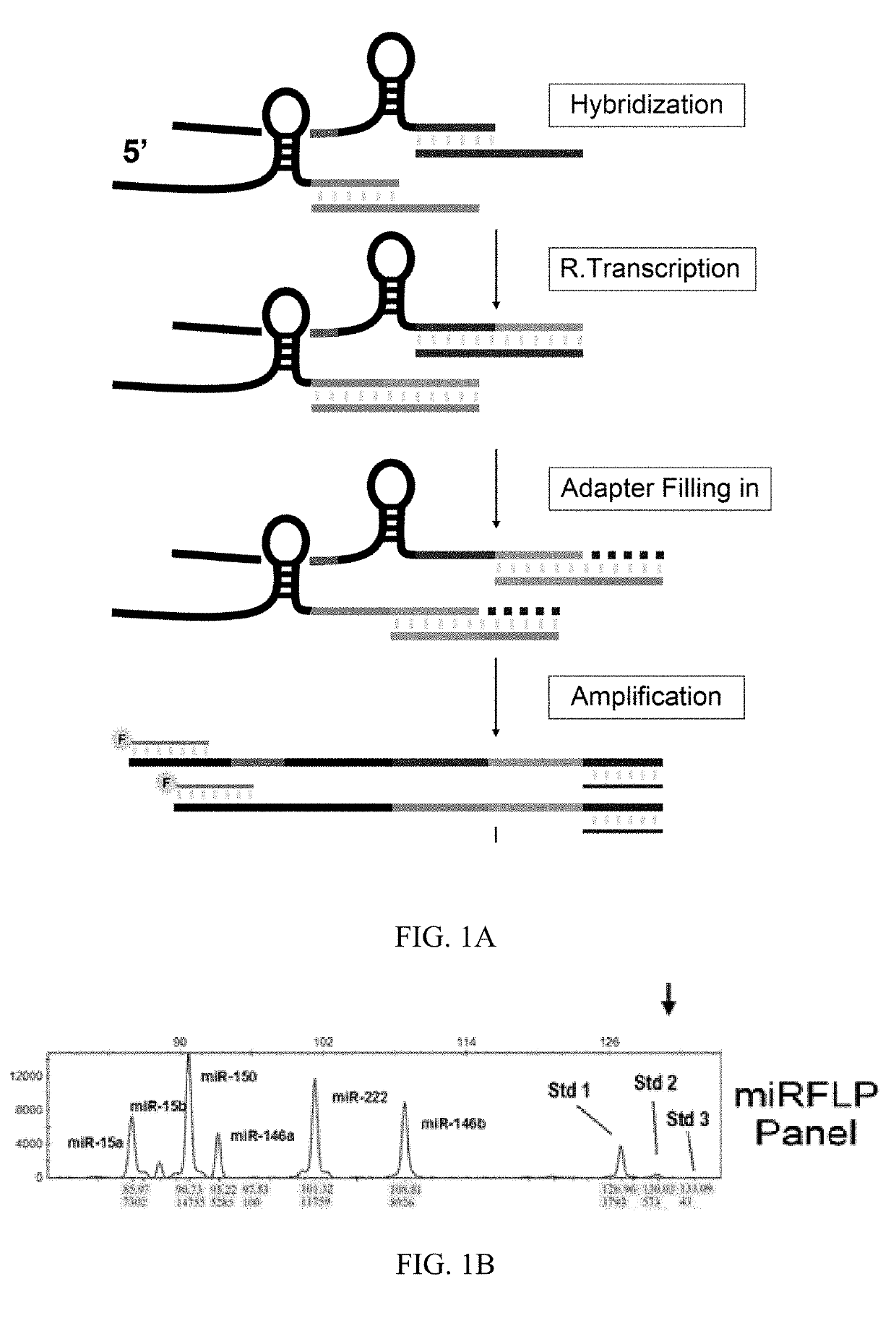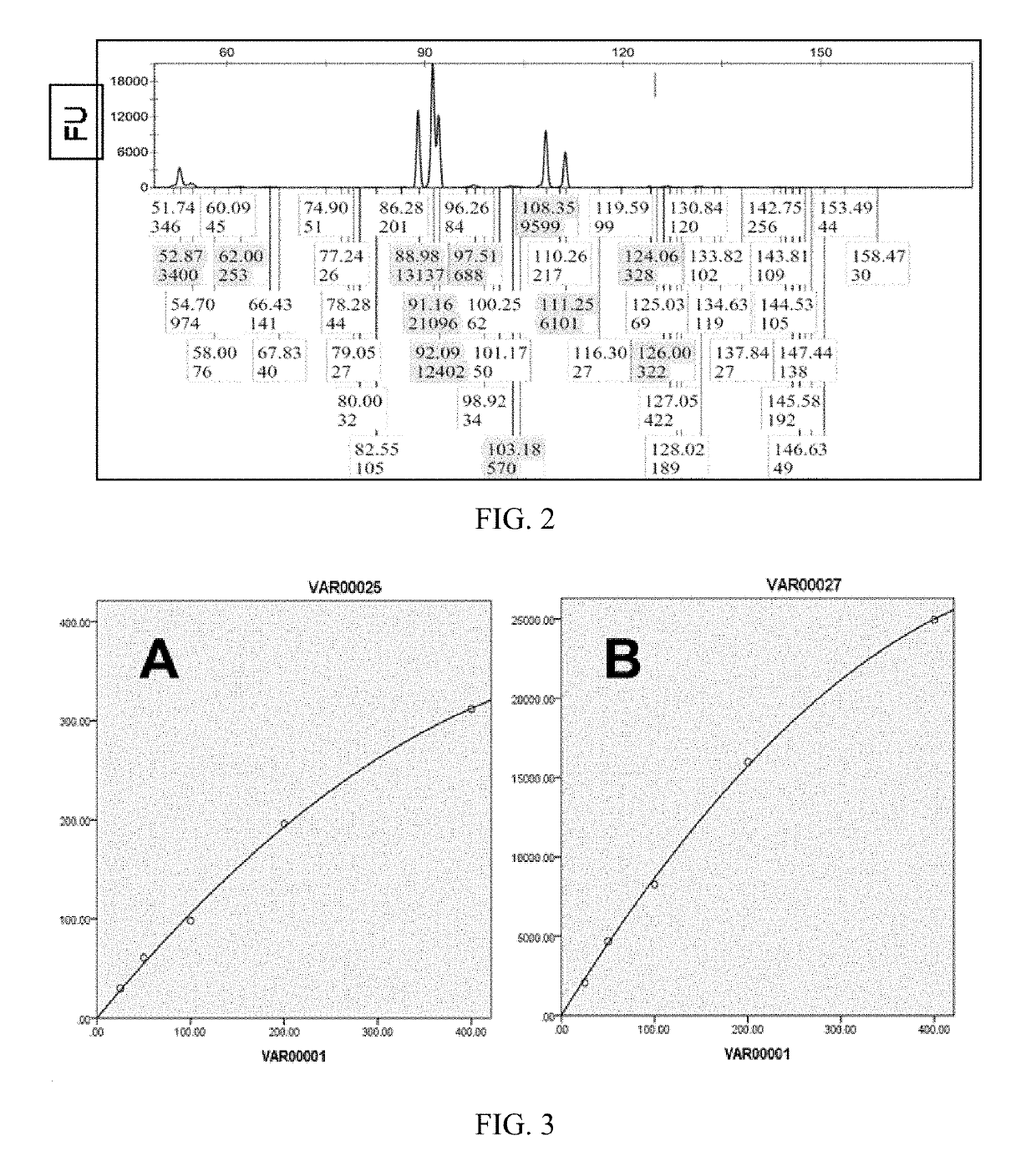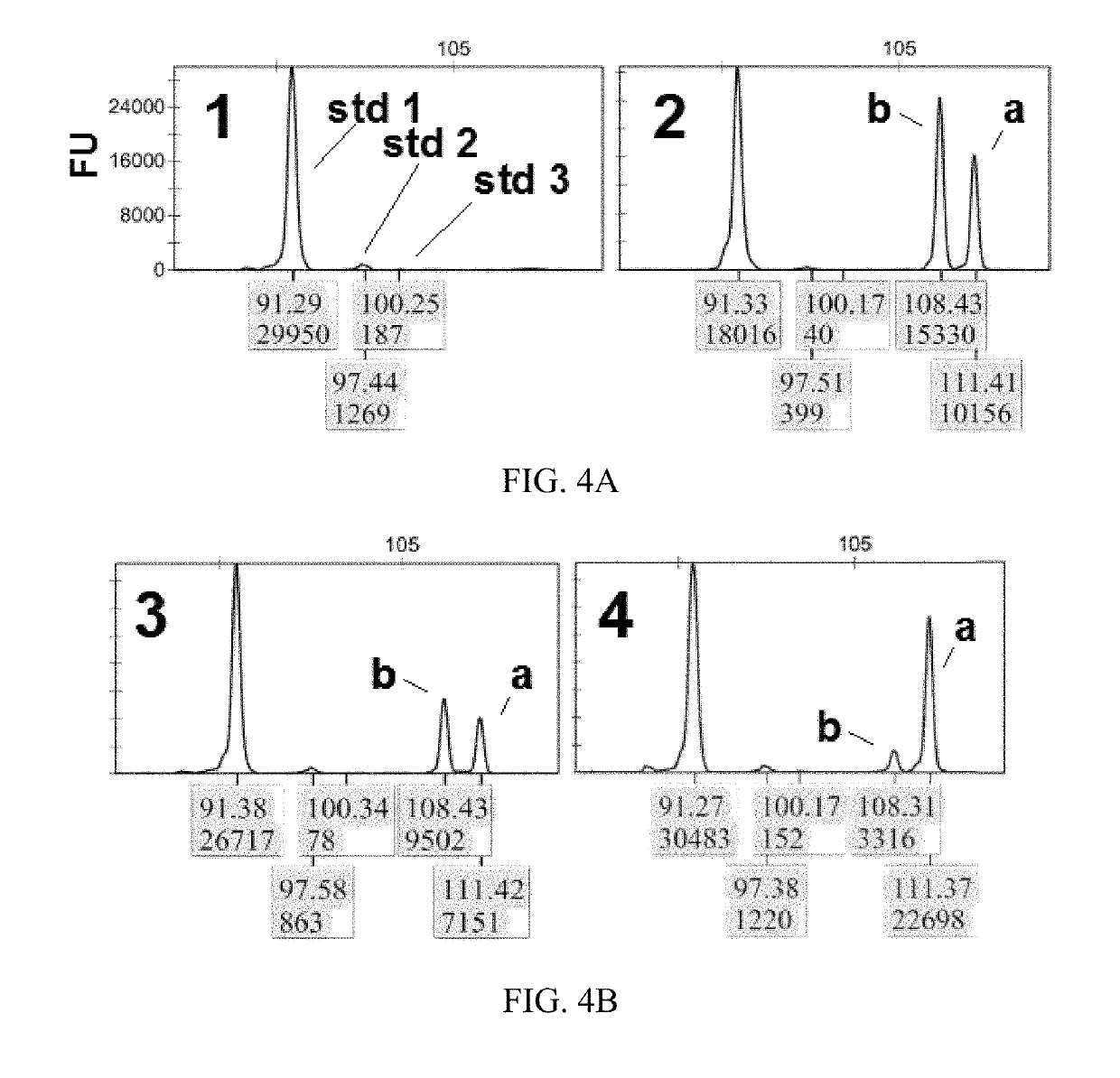Method for quantitative measuring short RNA using amplified DNA fragment length polymorphism
a technology of amplified dna and rna, which is applied in the field of molecular biotechnology, can solve the problems of mirna testing methods sensitivity, take some time for their realization and actual application, and great challenges in purification and precision quantification of mirna, and achieve good repeatability, reliable results, and good repeatability
- Summary
- Abstract
- Description
- Claims
- Application Information
AI Technical Summary
Benefits of technology
Problems solved by technology
Method used
Image
Examples
embodiment 1
Reaction Process and Measurement Principle of miRFLP Quantitative Analysis
[0063]In this embodiment, omega primer is used as an example to illustrate the reaction process and measurement principle of miRFLP
[0064]Referring to FIGS. 1A and 1B of the drawings, miRFLP reaction consists of four steps: miRNA reverse transcription, cDNA tailing, PCR synchronous amplification, and fluorescence fragment length polymorphism analysis of PCR products. The first step of the reaction is to hybridize miRNAs and omega primers. The miRNAs are paired with complementary probes. Then, reverse transcriptase is used to synthesis cDNA by using unpaired 3′ terminal of miRNA as the template. After removing RNA, the newly synthesized cDNA and the 3′ oligonucleotide primer containing a common PCR target undergo hybridization while DNA polymerase is used to fill the single-stranded gap after DNA pairing starting from 3′ terminal of cDNA. After this combination, the correctly assembled cDNAs have the same 5′ and...
embodiment 2
n Test of Fluorescence Intensity of PCR Fluorescent Labeled Products with Equal Times Dilution
[0065]The fluorescence intensity measured by fluorescence quantitative analyzer has a direct proportional relationship to the number of fluorescent substances to be measured. This relationship is related to the configuration of the fluorescent probe, that is, different fluorescent probes have different fluorescence response curve. For ABI's Prizma 310 DNA sequencer, the number of fluorescent substances to be measured is in a linear quantitative relationship when the measured fluorescence intensity is in the range of 5-7000 FU, and the relationship changes to a parabola when the fluorescence intensity is greater than 7000FU. Different fluorescent probes of different instruments have different response characteristics which can affect the regression relationship between the measured fluorescence intensity and amount of fluorescence to be measured.
[0066]According to this embodiment, calibratio...
embodiment 3 experiments
of miRFLP Quantitative Analysis for miR-92a and miR-92
[0069]In miRFLP quantitative analysis, the miRNA for testing is mixed with standard dynamic microRNA, then processed through miRNA reverse transcription, cDNA tailing modification and synchronous fluorescent PCR amplification, and finally DNA fragment length and fluorescence quantitative analysis are performed by DNA sequencer. Specifically, first prepare stock solution:
[0070]2 μl of 5×RT buffer, 1 μl of 10 mM MgSO4, and 1 μl of a standard dynamic miRNA mixture, the mixture includes “standard 1 RNA” (i.e., “std1” in FIG. 4A, the same applies hereinafter) having a molecule number of 3×106, “standard 2 RNA” (i.e., “std2” in FIG. 4A, the same applies hereinafter) having a molecule number of ×105, “standard 3 RNA” (i.e., “std3” in FIG. 4A, the same applies hereinafter) having a molecule number of 3×104, the RNA sequence of the standard dynamic miRNA is shown in Table 2. Sequence searches by the Sangers miRbase version 20 database sho...
PUM
| Property | Measurement | Unit |
|---|---|---|
| fragment length polymorphism | aaaaa | aaaaa |
| fluorescence quantitative analysis | aaaaa | aaaaa |
| fluorescence intensity | aaaaa | aaaaa |
Abstract
Description
Claims
Application Information
 Login to View More
Login to View More - R&D
- Intellectual Property
- Life Sciences
- Materials
- Tech Scout
- Unparalleled Data Quality
- Higher Quality Content
- 60% Fewer Hallucinations
Browse by: Latest US Patents, China's latest patents, Technical Efficacy Thesaurus, Application Domain, Technology Topic, Popular Technical Reports.
© 2025 PatSnap. All rights reserved.Legal|Privacy policy|Modern Slavery Act Transparency Statement|Sitemap|About US| Contact US: help@patsnap.com



